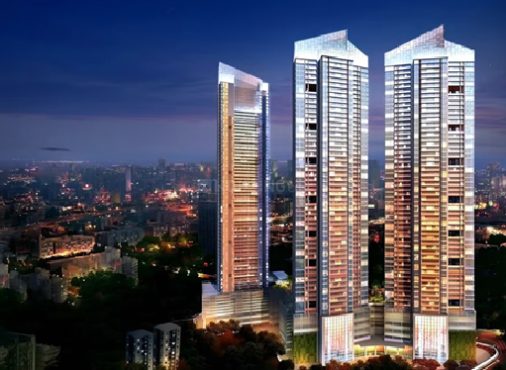Land has endured the test of time, and it is currently one of the most dependable and profitable asset classes. Land, unlike developed properties, does not depreciate, allows for unlimited customization, and is an excellent inflation hedge. That’s why land is one of the greatest investments for 2025-2026.
Investors are gravitating to land because of its versatility. Whether it’s to build a dream house, develop commercial ventures, or simply hold it as a long-term appreciating asset, land is a gateway to wealth development that aligns with various investment strategies.
In this blog, we will discuss the economic causes, market trends, and techniques that will make land the hottest investment asset in 2025-2026, allowing you to invest with confidence.
Land investment is shaped by major market trends.
Land demand has surpassed other real estate sectors, owing to changes in consumer behaviour, economic improvements, and technological advancements. Knowing these tendencies will allow you to make more informed financial selections.
Recovery after the pandemic
The pandemic has altered how people understand land ownership. The work-from-home lifestyle has prompted many to relocate to suburban and rural locations where land is more affordable and expansive. Rustomjee Belle Vue at Kasara, located in a peaceful but well-connected region, is an example of this tendency.
Urbanisation and Infrastructure Development
As cities expand, suburban areas become the new growth centers. Upcoming metro lines, industrial corridors, and smart city initiatives are driving up land values in underutilized areas.
Residential demand is changing.
Buyers are choosing land over flats to develop homes that suit their lifestyles. Properties like Rustomjee Belle Vue provide the ideal balance of location, luxury, and expansion potential to meet these shifting demands.
Economic Factors That will boost Land Value
Land value is influenced by macroeconomic situations, regional developments, and population changes. In 2025-2026, these forces have combined to make land the hottest investment. Investors who understand these drivers can make informed decisions to maximize returns.
Key Drivers of Land Value
Road, highway, and metro rail improvements increase land accessibility and value.
Being close to an airport or industrial region can result in a significant boost in land value.
Rustomjee Belle Vue in Kasara, with planned infrastructure, is in high demand due to its connectivity and growth potential.
Rapid growth in cities and suburbs necessitates the development of residential and commercial properties.
Smaller cities and peri-urban areas are becoming investment magnets, owing to government-led smart city schemes and private developments.
| Factor | Impact on Land Value |
| Infrastructure Projects | Roads, airports, and railways increase accessibility. |
| Population Growth | Drives demand for housing and commercial spaces. |
| Government Policies | Incentives for suburban development encourage investment. |
Options for Investing in Land
Land investing satisfies a variety of financial objectives and personal preferences. Whether you desire rapid development or long-term gain, choosing the correct type of land is critical to generating the best results.
Residential Plots
Primary Use: To build homes or sell to developers for housing developments.
Advantages: High demand, consistent appreciation, and in line with urbanization.
Example: Rustomjee Belle Vue provides home plots in great areas at Kasara, complete with modern amenities and connections.
Commercial Land
Primary Use: For offices, retail spaces, and warehouses.
Advantages: Rental income and ROI are higher than those for residential plots.
Consideration: Finding plots near business districts or transport hubs requires thorough research.
Agricultural Land
Primary Use: Farming, eco-tourism projects, or land banking.
Advantages: Tax benefits, lower acquisition costs, and eventual conversion to residential or commercial.
Emerging Trend: Farmland is used for organic farming and getaways.
Mixed-Use Plots
Primary Use: Residential and commercial use.
Advantages: Market flexibility and agility are key.
Growth Opportunity: Mixed-use is popular in peri-urban settings with rapidly developing infrastructure.
Industrial Land
Primary Use: Factories, warehouses, or logistics hubs.
Advantages: Demand remains steady as e-commerce and manufacturing expand.
Key Factor: Proximity to transport and industrial routes increases value.
Location Selection Strategies
The placement of the property plot is a critical aspect in determining investment success. A placement plan ensures higher appreciation while reducing the risk of demand variations. Here’s how to find the best location for your land investment.
Connectivity and Accessibility
Proximity to highways, airports, and public transportation systems is critical for land appreciation.
Rustomjee Rustomjee Belle Vue at Kasara, located near major roadways, exemplifies how connectivity influences demand.
Future Developments
Government-approved projects such as metro lines, IT parks, and industrial zones boost land values.
Research on prospective projects enables investors to enter high-growth markets.
Social Amenities
The proximity of schools, hospitals, retail, and entertainment opportunities makes land more valuable for residential usage.
Environmental Appeal
Hills, lakes, and vegetation are examples of areas with natural beauty that provide both lifestyle and investment benefits.
Scenic plots are becoming increasingly desirable as second residences or eco-friendly developments.
Zoning and Land Use
Check whether the site is zoned for residential, business, or agricultural usage.
Make sure the zoning suits your development plan.
Financial Planning for Land Investment
Financial planning is the cornerstone of any successful land investment journey. Land, unlike other asset classes, has upfront acquisition costs as well as ongoing development or maintenance charges. Be careful to address these so that your investment aligns with your financial goals.
Budget Allocation
Include acquisition costs, taxes, registration fees, and future development costs.
Maintenance and legal expenditures that may accrue during ownership.
Allocate a portion of your budget to land investment while keeping some liquidity for other asset classes.
Don’t overcommit to a single investment to hedge against market changes.
Set aside 10-15% of your overall investment as a contingency reserve for unexpected needs.
Loan Options and Points to Consider
Land Loans vs. Home Loans: Land loans differ from home loans in that they have higher eligibility requirements and a shorter tenure.
Interest Rates: Compare interest rates from different lenders to determine how much you can afford over the loan time.
LTV Ratio: Most banks lend up to 70-80% of the land value. Prepare to pay the remaining balance as a down payment.
Documentation: Prepare the relevant paperwork, such as a title deed and an encumbrance certificate, before applying for a loan.
Planning for Down Payment
Estimate Upfront Costs: The down payment normally ranges between 20 and 30% of the plot’s worth.
Liquidity Management: Save enough to cover the down payment without jeopardizing your other financial obligations.
Installments: Some developers provide payment plans that allow you to pay the down price in installments.
Land Loans
Eligibility: Plots within municipal limits that are not used for agriculture are eligible for land loans.
Repayment Tenure: Shorter than home loans, 10-15 years.
Prepayment: To save interest, pick a loan with adjustable prepayment terms.
Tax Benefits: Plan appropriately because land loans do not provide the same tax advantages as home loans.
| Aspect | Key Consideration |
| Budget Allocation | Reserve funds for down payment, taxes, and other fees. |
| Loan Options | Land loans often have stricter criteria; research thoroughly. |
| Down Payment | Typically, 20%-30% of the plot value is required upfront. |
| Long-Term Costs | Include registration fees, maintenance, and development costs. |
Summarising
The endless adaptability offered by land investment is among its best features. It enables investors to shape the land to suit their requirements, be it establishing a business, building a home, or even keeping it as agricultural land for future growth.
An excellent illustration of why land investment is the best course of action is Rustomjee Belle Vue. Rustomjee, which has a reputation for competence and trust, makes sure your investment aligns with your goals for luxury and growth. Take a look at Rustomjee Belle Vue’s opportunities in Kasara right now.
Rustomjee Belle Vue is a peaceful hideaway in the Kasara hills, only 98 kilometres from Mumbai. Nestled in the Sahyadris, it provides a peaceful retreat with easy access via the Samruddhi Motorway and Kasara railway station. Enjoy year-round agreeable weather, beautiful nearby attractions such as Igatpuri and the Ashoka Waterfall, and the advantages of rapid local development. Ideal for a relaxing vacation with easy access to the city.
FAQs
Are lands a good investment?
Land is a reliable asset in one’s investment portfolio since it offers both immediate security and the possibility of future value growth. Land ownership might also present chances for agricultural or development purposes, bringing in money and promoting economic expansion.
Is it good to invest in land?
No Depreciation: Unlike structures, land usually endures over time and does not lose value. Because of its durability, land is a more reliable and long-term investment. Tax Benefits: There may be tax breaks associated with land ownership, depending on local laws.
Which is better, land or flat?
Age has no effect on a piece of land; however, the quality of a flat may decline over time. When a home is well-maintained, remodeling or reconstruction is often necessary. Furthermore, the layout or size of a flat cannot be altered later.
Is it worth investing in plots?
Yes, it can be very profitable to invest in plots. Investing in land has several benefits, such as potential tax advantages, portfolio diversification, and flexibility in use. Plots typically have enduring worth because they don’t deteriorate.








